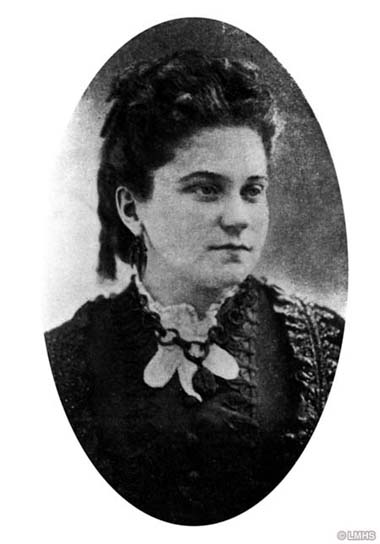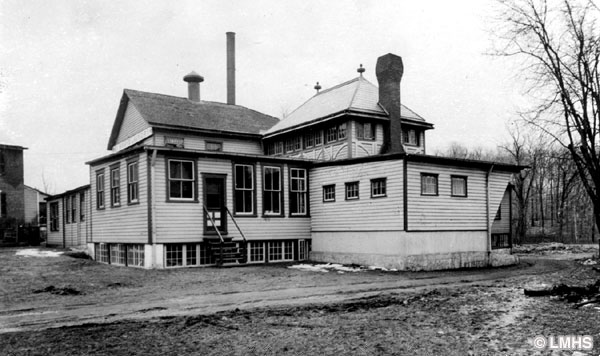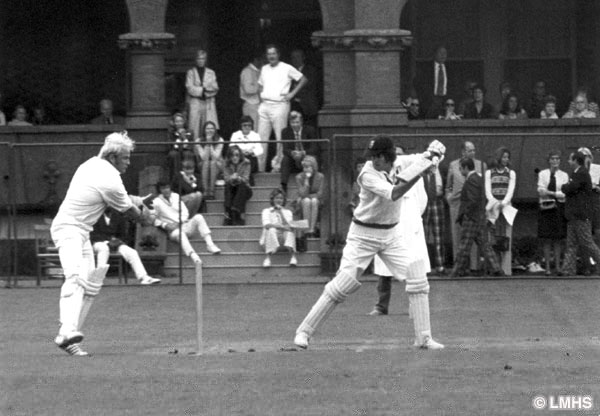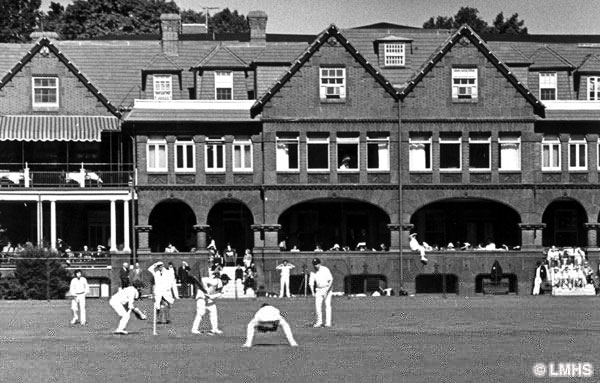The Merion Cricket Club

The historic sport of cricket has been a part of Lower Merion since it was first played at Haverford College in 1834. In 1865, fifteen young Main Line enthusiasts first played cricket on the grounds of Colonel Owen Jones’ estate in Wynnewood; next on new club property acquired on Cricket Avenue in Ardmore.
Since the move to Haverford in 1892, Merion Cricket Club has a long history of involvement with other sports: lawn tennis (1879); bowling (1895); golf (1895), the cricket and golf clubs separated in 1942; soccer (1896); squash racquets (1900); field hockey (c. 1900); badminton (1937). For many years, the club has hosted important tournaments in these various sports and an impressive group of its members have become national champions.
Merion Cricket, after 134 years, continues to support a vital progarm of family-oriented athletic and social programs within its fine facilities in Haverford: fine sportsmanship, good fellowship.

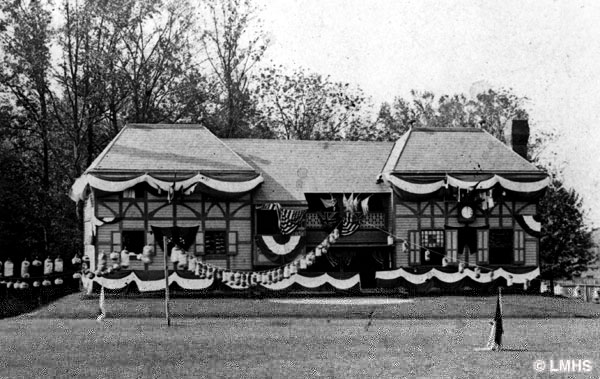
A New Life
When Merion Cricket moved out of their Ardmore location after the fire, the property was purchased by Hamilton & Yarnall in 1892. The driving force behind this ambitious project was Emily Borie, Mrs. James Rhodes who, with her husband, organized the laundry to give work to the women of St. Mary’s Parish who were devastated during the hard times that followed the national panic of 1893.
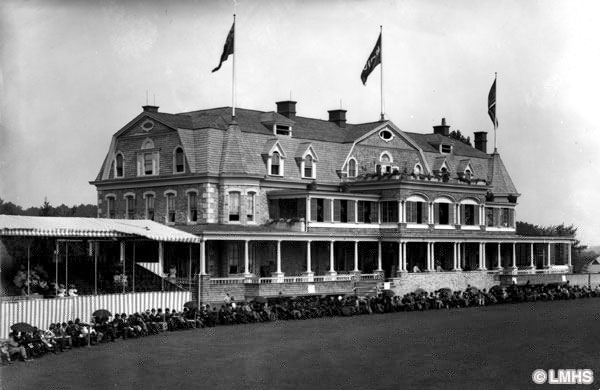
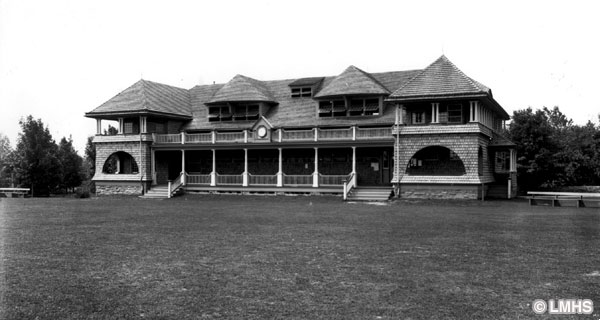
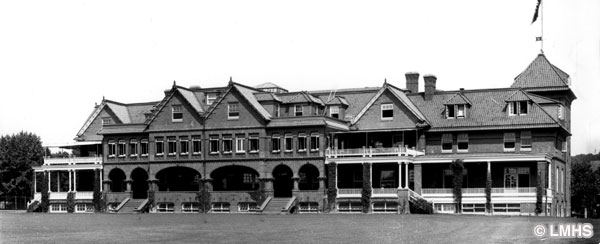
There is a description of the new clubhouse in Hotchkin’s 1897 book, Rural Pennsylvania…”porte-cochère and recessed porches, two separate hallways for men and women—a large central hall for general use, and on one side the café, library, and billiard-room for men, and on the other the ladies reception and tea-rooms. Below stairs are bowling-alleys and shuffle-board rooms, store-rooms, ladies’ tennis-rooms, cricket dining-room, lavatories, etc. The second floor contains a large main dining room, private dining-rooms, bed-rooms for men, bath-rooms, etc., and a large theatre with dressing-rooms and a separate entrance. On the third floor are more bed-rooms for men, kitchens, sewing-rooms and rooms for employees. The whole house is heated by one large boiler, and lighted with both gas and electric lights. It is supposed to be the most complete and largest country-club house in this country.”
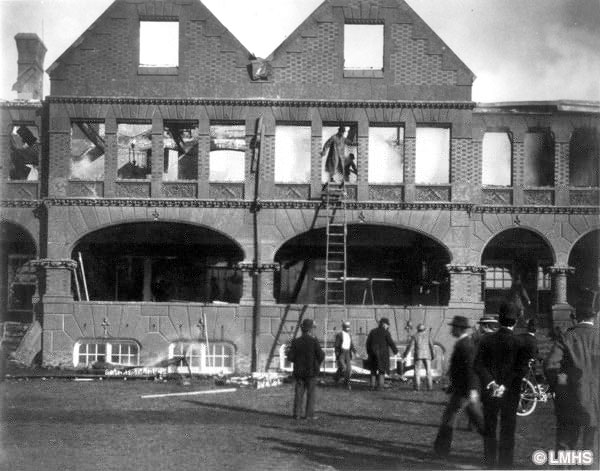
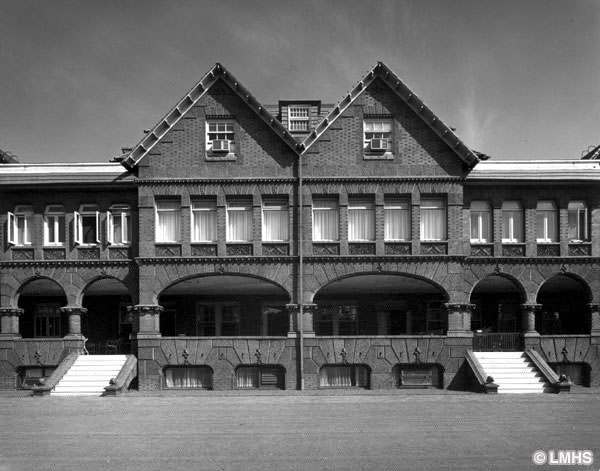
“A Gentleman’s Game”
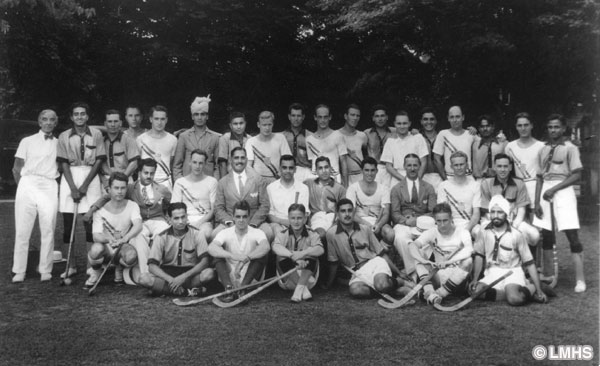
Haverford College took to cricket from the beginning. It was introduced there in the 1830s by William Carville, an English gardener brought over to landscape the new campus. In 1834, the first cricket club, made up entirely of American youth, began one year after the college opened. Haverford’s Quaker founders weren’t sure about the effect the game’s excitement would have on students who were encouraged to study and behave with fitting decorum. But even the staid members of the Society of Friends recognized cricket’s historical appeal: the game has been traced as far back as the Middle Ages. Creagh was one of its early forms, played around 1299. In the colonies, prior to 1776, cricket was known as a “gentleman’s game.”
In cricket’s heyday, from the 1860s to the 1920s, many schools had teams. The sport then entered a period of low interest, but is now undergoing a renaissance in America with increasing numbers of cricket teams in major universities…95 in New York, 31 in Miami, for example.
Haverford College, however, is the only one granting varsity letters to its cricket team.

